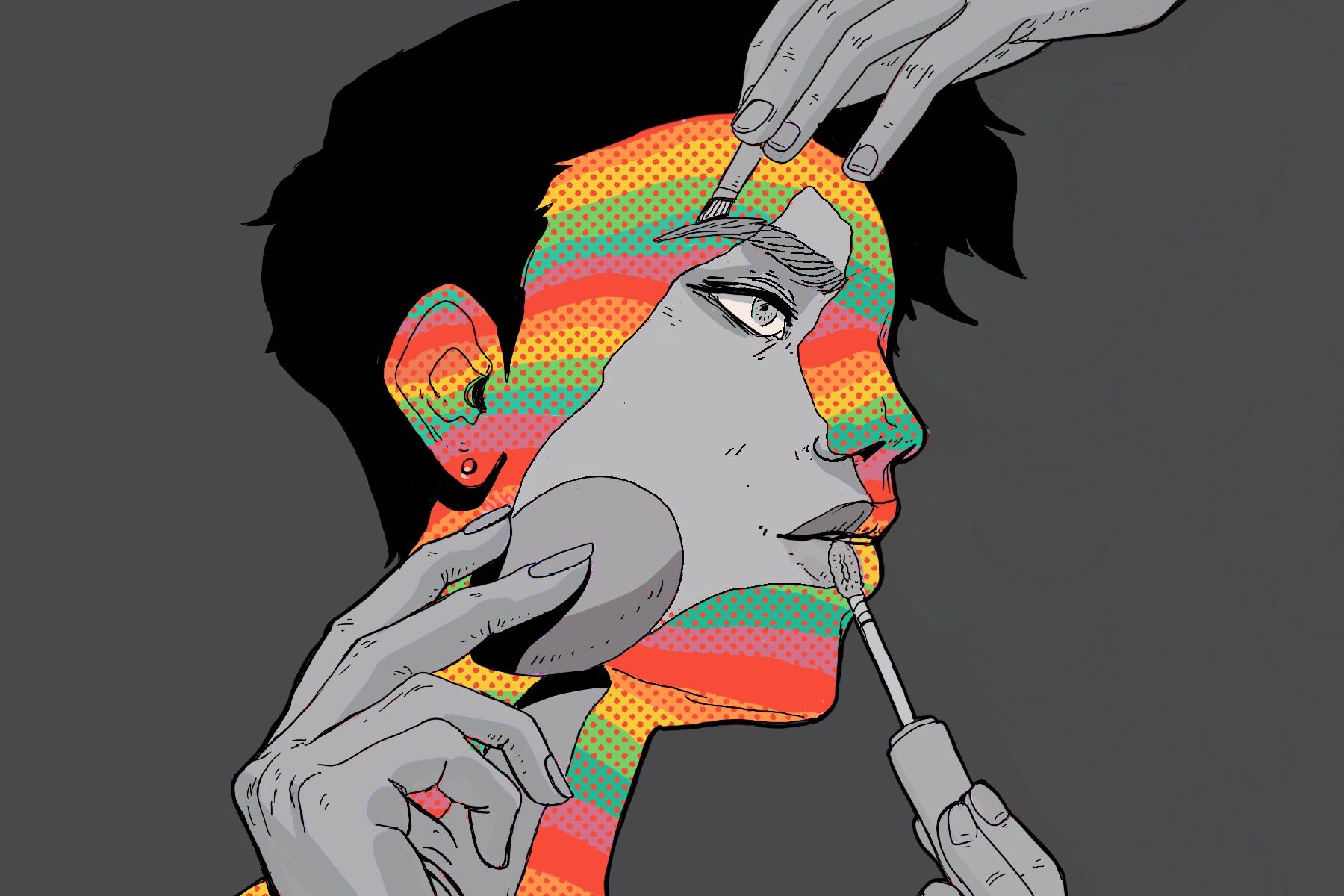It’s no surprise that interpreting old, and sometimes even ancient, cultures is an extremely difficult task. It’s one that anthropologists, archeologists and historians try to figure out how to do day in and day out. An understanding of as many of the world’s past and present cultures is crucial for understanding humanity’s relationship with nature and each other through history and for analyzing current cultural phenomena. The discovery of the Lovers of Modena, a specimen of two human skeletons buried holding hands, was a piece of a puzzle shedding light on burial practices in Italy 1,600 years ago. Now that it’s widely known that the two lovers are actually both men, historians are back-pedaling and contributing to LGBTQ+ erasure, by positing that the men were related or good friends.
Yes, historians have “gal-paled” the skeletons of two men holding hands. In their defense, the skeletons were too poorly preserved to tell sex until researchers were able to pull dental enamel and found the presence of a protein only men have, and men and women have been found buried together in Italy around the same time as the Lovers of Modena.
These painted the picture that lovers would be buried together, and that they were men and women, so the discovery of the two men in the same grave has researchers and historians in a flurry to piece together the most likely explanation given what’s known about that culture, its burial practices and its viewpoint on homosexuality.
Despite the intricacies of historical and cultural research, the possibility that the two skeletons belonged to two, ancient gay men can’t be ignored. Anything less than very serious consideration that the two are legitimate lovers would erase the already ignored part that LGBTQ+ individuals have played in history. There’s little evidence of men being buried together in such a way in the first place; the only burials like the Lovers of Modena are of men and women, whom historians assumed to be lovers. If the Lovers of Modena can’t be lovers because they are both men, that makes it just as possible that the men and women buried together weren’t lovers, but good friends or close relatives.
LGBTQ+ erasure is, unfortunately, an altogether commonplace occurrence. The sexualities of historical or ancient individuals is, of course, almost always a debatable topic. Current understandings of ancient cultures can only be taken using a modern lens but considering that lens is largely homophobic to begin with, it bears arguing that more historical figures were members of the LGBTQ+ community, however little their debated sexualities are known.
Alexander Hamilton and his friend John Laurens are two well-known figures who might have been gay or bisexual. Their letters to each other included flowery language and affectionate nicknames for each other. Masculinity, and particularly American masculinity, were definitely thought of differently, and men were more affectionate with their friends than American men are taught to be now, but the point lies in the debate of their sexualities and how well known that debate is.
William Shakespeare is another man famous for his possible bisexuality. Shakespeare’s works are loaded with dick jokes and innuendos, despite modern sensibilities finding the eloquence of his early modern English to be quite high brow. Shakespeare’s speculated to have written some of his famous sonnets for men instead of women, but the possibility of his nonconforming sexuality is not only well-known but more widely accepted than others. This can perhaps be attributed to another modern cultural norm, or stereotype really, about men in theater and other artistic pursuits not being entirely straight.
A discussion of ancient LGBTQ+ figures would be woefully incomplete without mention of Sappho of Lesbo. Sappho’s poetry was famously about other women in almost unmistakably romantic, and sometimes even erotic, terms. Despite being popular and accomplished during her time, little remains of Sappho’s poetry. Only one full poem and some fragments are left of her work. While the veritable saint of lesbianism, Sappho’s work is not that widely taught, so knowledge of her literary prowess and thus sexual orientation are little known to the general public.
The biggest question you might be asking is “so what?” Yeah, some random people with varying degrees of celebrity might have been a part of the LGBTQ+ community of their time. But who cares? Well, gay people and other members of the LGBTQ+ community care. Everyone should care.
Erasure of anything in history, not just LGBTQ+ erasure, is a metaphorical violence to the humanity of the past. Oversimplification of history by erasing what’s unacceptable to modern eyes is an injustice to the complexity of the human race. We are as complex, flawed and varied as we have always been. Deleting those parts of history that stray from modern norms, or what modern people associate with humans in a time period, is a disservice, especially to marginalized communities.
Early anthropology was brought about to study “other” cultures, where sociology pertains to “our” culture. Considering the place and time period of the birthplace of modern anthropology and sociology, it’s easy to understand that the “our” culture means European, or Euro-American, culture where “other” is, self-explanatorily, other cultures.
The distinction, however, illustrates that “othered” cultures were seen as savage, so marginalized communities, specifically racial and ethnic, are not new to the erasure by straight, white, Christian history. “Othered” cultures in Africa, Latin America, Asia and even North America have had their humanity and their breadth of knowledge stripped from them by the lens that researchers and historians have looked at them through.
LGBTQ+ people have had their way of life persecuted in great numbers across the world for hundreds of years. The slaughter of gay individuals is a scarcely broached topic during discussion of the Holocaust. LGBTQ+ erasure across history further alienates an already underrepresented community. With suicide rates and homelessness among LGBTQ+ youth being among the highest in the country, it’s plainly criminal to continue aiding and abetting LGBTQ+ erasure. “Gayness” is hard to gauge through skeletal specimens, personal letters and educated guesses at ancient cultures, but historians, researchers and the public need to open a dialogue about LGBTQ+ history for the good of our world.
















